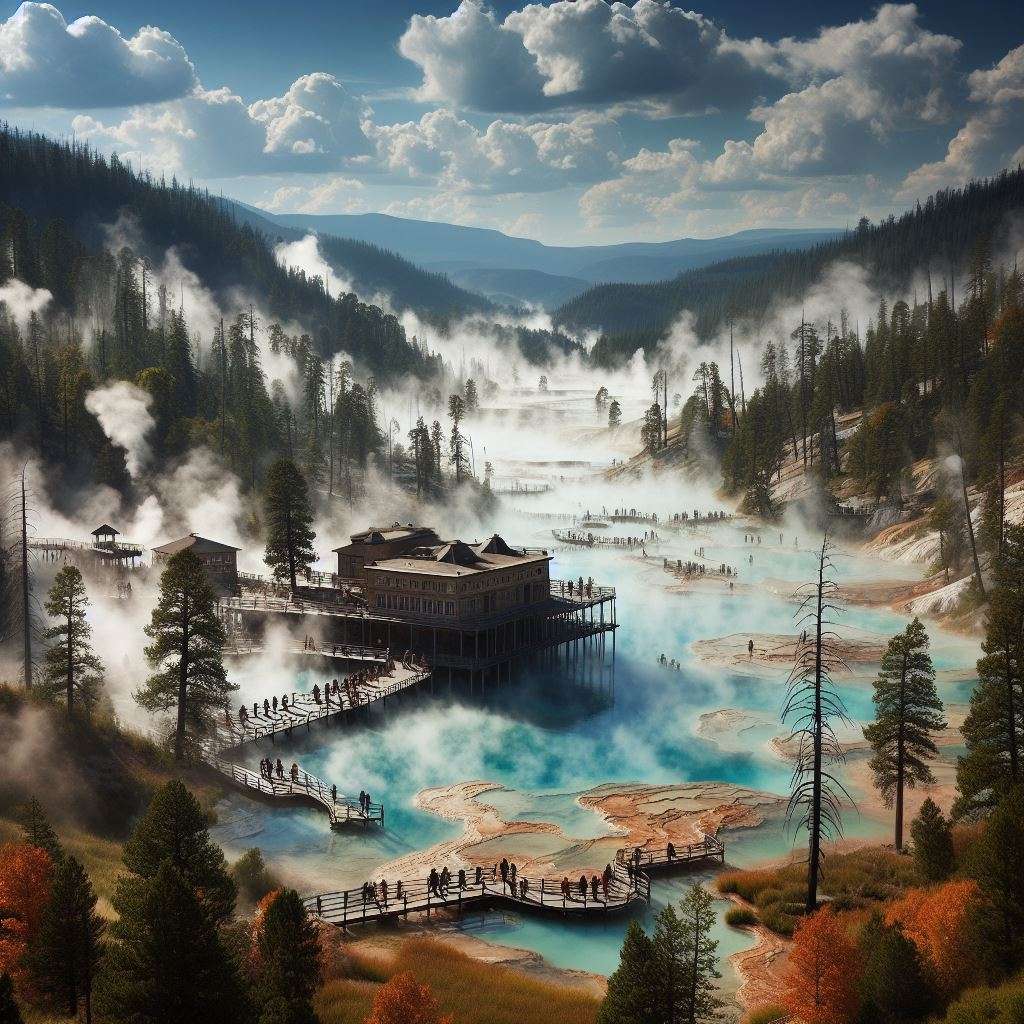10 Unforgettable Experiences at Hot Springs National Park: A Comprehensive Guide
Introduction
🌿 Welcome to a world where nature’s embrace and relaxation converge – Hot Springs National Park! Nestled in the heart of Arkansas, this enchanting destination offers more than just picturesque landscapes; it’s a haven of healing and adventure waiting to be explored.
Imagine soaking in centuries-old thermal waters, surrounded by lush greenery and the soothing sounds of nature. Picture yourself wandering through scenic trails, discovering the hidden gems of this national treasure. From the therapeutic benefits of the rejuvenating hot springs to the awe-inspiring beauty of the landscape, Hot Springs National Park promises an unforgettable escape.
In this blog, we’re your virtual tour guides, ready to unveil the magic of Hot Springs National Park. Get ready to embark on a journey filled with relaxation, exploration, and the perfect blend of nature’s wonders. Join us as we dive into the top attractions, wellness secrets, and insider tips that will make your visit to Hot Springs National Park an experience to cherish.
So, grab a cup of your favorite brew, settle into a comfy spot, and let’s embark on an adventure together – Hot Springs National Park awaits, and the excitement is just beginning! 🌄✨
Attractions in Hot Springs National Park:
Presented below is a table showcasing the top 25 attractions in Hot Springs National Park, spotlighting the unique characteristics that set each location apart and make it noteworthy.
| # | Attraction | What’s Special |
|---|---|---|
| 1 | Hot Springs Mountain | Scenic mountain trails with panoramic views. |
| 2 | Bathhouse Row | Historic bathhouses with thermal spring water. |
| 3 | Grand Promenade | Elegant walking path with beautiful landscaping. |
| 4 | Hot Springs National Park Visitor Center | Information center with exhibits and park details. |
| 5 | Quapaw Baths and Spa | Modern spa experience with thermal pools. |
| 6 | West Mountain Trail | Hiking trail offering serene natural surroundings. |
| 7 | Hot Springs Mountain Tower | Observation tower providing panoramic city views. |
| 8 | Garvan Woodland Gardens | Botanical gardens with diverse plant collections. |
| 9 | Lake Hamilton | Large reservoir with opportunities for water activities. |
| 10 | Hot Springs Historic Baseball Trail | Historical trail showcasing baseball landmarks. |
| 11 | Goat Rock Trail | Nature trail with unique rock formations. |
| 12 | Hot Springs National Park Mountain Bike Trails | Mountain biking trails for outdoor enthusiasts. |
| 13 | Hot Springs Duck Tours | Guided tours exploring the city and lakes. |
| 14 | Fordyce Bathhouse | Historic bathhouse museum offering a glimpse into the past. |
| 15 | Hot Springs National Park Scenic Drives | Beautiful drives with scenic overlooks and natural beauty. |
| 16 | Hot Springs Jazz Festival | Annual jazz festival celebrating musical heritage. |
| 17 | Lake Catherine State Park | Adjacent state park with additional outdoor activities. |
| 18 | The Gangster Museum of America | Museum exploring the city’s connection to organized crime. |
| 19 | Ouachita National Recreation Trail | Long-distance hiking trail passing through the park. |
| 20 | DeSoto Springs Trail | Trail with scenic views and natural hot springs. |
| 21 | Hot Springs Mountain Drive | Scenic drive offering panoramic views of the park. |
| 22 | Crystal Springs Trail | Hiking trail with crystal-clear spring views. |
| 23 | Hot Springs National Park Camping | Campgrounds for those seeking a closer connection to nature. |
| 24 | Mountain Valley Spring Water Visitor Center | Learn about the history of Mountain Valley Spring Water. |
| 25 | Hot Springs National Park Picnicking | Scenic picnic spots to enjoy the natural surroundings. |
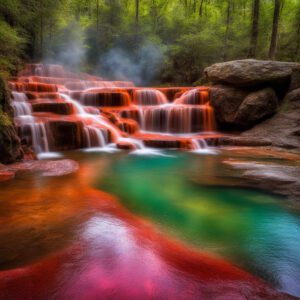
Location and Information:
Hot Springs National Park
Hot Springs National Park is located in the Ouachita Mountains of Arkansas, known for its thermal springs that have been drawing visitors for centuries. The park is situated in the city of Hot Springs.
Where is Hot Springs National Park?
Hot Springs National Park is located in the central-western part of Arkansas, about 55 miles southwest of the state capital, Little Rock. The park encompasses the city of Hot Springs.
Hot Springs National Park Sign
There isn’t a specific “sign” for Hot Springs National Park, but the park entrance is marked by a gateway that welcomes visitors to the unique experience of thermal springs and scenic landscapes.
Closest Airport to Hot Springs National Park
The nearest major airport to Hot Springs National Park is Bill and Hillary Clinton National Airport (LIT) in Little Rock, approximately 55 miles away.
How Big is Hot Springs National Park?
Hot Springs National Park covers approximately 5,550 acres, preserving not only the thermal springs but also the surrounding mountainous landscapes.
Accommodation:
Hot Springs National Park Camping:
The park offers camping facilities at Gulpha Gorge Campground, providing a serene natural setting for visitors seeking an immersive experience in the park.
Hotels Near Hot Springs National Park:
Numerous hotels are available in the city of Hot Springs, offering a range of accommodations from luxury resorts to budget-friendly options, catering to diverse traveler preferences.
Hot Springs National Park Cabins:
Visitors can find charming cabins in and around Hot Springs, providing a cozy and private retreat amidst the natural beauty of the region.
Camping at Hot Springs National Park:
Gulpha Gorge Campground within the park provides a convenient and scenic location for camping, offering a unique experience of staying close to the thermal springs.
Hot Springs National Park Resorts:
The city of Hot Springs boasts several resorts, combining modern amenities with the natural allure of the hot springs, providing a luxurious escape.
Places to Stay in Hot Springs National Park:
In addition to hotels and cabins, there are bed and breakfasts, inns, and vacation rentals available, providing varied options for lodging.
Hot Springs Homes for Sale:
For those considering a more permanent stay, Hot Springs offers residential options, allowing enthusiasts to reside in this unique city surrounded by the national park.
Hot Springs Vacation Rentals:
Vacation rentals provide an alternative accommodation option, allowing visitors to experience the local lifestyle while enjoying the natural wonders of the area.
Hot Springs Cabin Rentals:
Cabin rentals are available, offering a rustic and charming stay amidst the natural beauty of the surrounding mountains.
Hot Springs Airbnb:
Airbnb options abound in Hot Springs, providing a diverse array of accommodations for those looking for a more personalized and local experience.
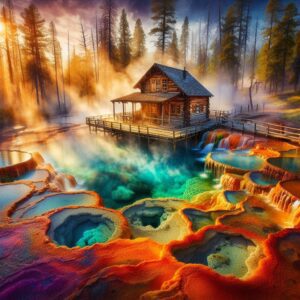
Activities and Things to Do:
Things to Do in Hot Springs National Park:
The park offers a plethora of activities, including hiking, bird-watching, and exploring the historic bathhouses, providing a rich experience for all types of visitors.
Hot Springs National Park Trails:
With over 26 miles of hiking trails, visitors can explore the diverse landscapes, from scenic overlooks to dense forests, catering to both novice and experienced hikers.
Best Hikes in Hot Springs National Park:
Popular hikes include the Sunset Trail, Goat Rock Trail, and the challenging Peak Trail, each offering unique perspectives of the park’s natural beauty.
Fun Things to Do in Hot Springs National Park:
From taking a traditional bath in the historic bathhouses to strolling along Bathhouse Row, the park offers a mix of therapeutic and recreational activities for a fun and memorable visit.
Hot Springs National Park: A Tapestry of History, Healing, and Natural Wonders
Oldest Federal Reserve: Hot Springs National Park, established in 1832, boasts the unique distinction of being the oldest area within the National Park System. Its historical significance predates even Yellowstone by 40 years. Initially designated as a reservation to protect the therapeutic hot springs, the park has evolved into a testament to the enduring appeal of its natural wonders.
Historic Bathhouse Row: Bathhouse Row, a prominent feature within Hot Springs National Park, is a collection of eight bathhouses, each showcasing distinctive architectural styles. During the early 20th century, these bathhouses gained popularity as sought-after destinations for those seeking the healing properties of the thermal waters. The row stands as a testament to the era’s architectural grandeur and the cultural importance placed on the park’s unique resources.
World-Class Artists: Throughout its history, Hot Springs National Park has served as a haven for an eclectic mix of visitors, including some notable personalities like Al Capone and Babe Ruth. The park’s serene ambiance, coupled with the allure of its therapeutic hot springs, attracted individuals from various walks of life, creating a rich tapestry of cultural significance.
Protected Waters: The thermal waters flowing within the park are not just a natural wonder but also legally protected. Legislation prohibits the commercial extraction of these mineral-rich waters, ensuring the sustainable preservation of this valuable resource for future generations. This protective measure underscores the commitment to maintaining the ecological balance of the park.
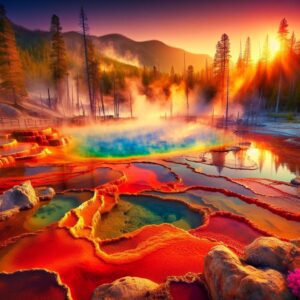
Cultural Affiliation: The park has deep-rooted cultural ties to Native American tribes, particularly the Quapaw. The Quapaw Bathhouse, situated on Bathhouse Row, stands as a testament to this cultural connection. Beyond its architectural significance, the bathhouse serves as a symbol of the enduring relationship between the land and its indigenous people.
Mountainous Terrain: While renowned for its hot springs, Hot Springs National Park encompasses more than just thermal waters. The park features picturesque mountain trails, including the West Mountain Trail and Sunset Trail, offering breathtaking vistas of the surrounding landscape. These trails provide an opportunity to immerse oneself in the diverse ecosystems thriving within the park.
Historic Drinking Fountains: A unique feature along the Grand Promenade is the presence of drinking fountains dispensing hot spring water. Visitors can partake in a tradition that dates back decades by sipping this naturally heated water, known for its distinct taste attributed to its mineral content. This simple act connects visitors to the park’s thermal heritage.
Flora and Fauna Diversity: Hot Springs National Park is a haven for biodiversity, featuring a rich tapestry of plant and animal life. Its diverse ecosystems, including hardwood forests, provide habitats for a wide array of species. The park’s commitment to conservation ensures the protection of these natural wonders, contributing to the ecological health of the region.
Jug Fountain Tradition: Adding to the park’s unique traditions, the Jug Fountain holds a special place in the hearts of visitors. For over a century, individuals have been collecting hot spring water in jugs from this iconic fountain. This ritual reflects the enduring connection people feel with the thermal waters and their desire to carry a piece of the park’s natural legacy with them.
Protected Hiking Trails: Beyond the allure of bathhouses and hot springs, Hot Springs National Park beckons outdoor enthusiasts with over 26 miles of hiking trails. These trails wind through diverse landscapes, offering glimpses of the park’s natural beauty and ecological significance. Each trail presents an opportunity for visitors to connect with nature while exploring the unique topography of the area.
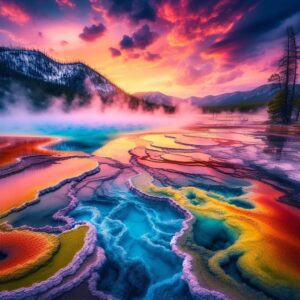
Frequently Asked Questions About Hot Springs National Park:
How can you access the hot springs in Hot Springs, Arkansas?
When looking to immerse yourself in the thermal waters of Hot Springs, Arkansas, head to Bathhouse Row in Hot Springs National Park. The historic Bathhouse Row features multiple bathhouses that offer traditional spa experiences. You can access these hot springs through commercial bathhouses, such as Quapaw Baths and Spa, or by visiting the public thermal fountains along the Grand Promenade.
What activities should I consider when traveling to Hot Springs, Arkansas?
Hot Springs, Arkansas, offers a diverse range of activities beyond its famed thermal waters. Explore the scenic hiking trails in Hot Springs National Park, visit the historic bathhouses on Bathhouse Row, stroll through the charming downtown area, and enjoy cultural attractions like the Gangster Museum of America. Additionally, don’t miss the opportunity to take a scenic drive through the Ouachita Mountains for breathtaking views.
How delicate are the hot springs at Yellowstone National Park, and why are they off-limits to tourists?
The hot springs at Yellowstone National Park are extremely delicate ecosystems. The unique microorganisms and bacteria thriving in these thermal features are highly sensitive to disturbances. To protect these fragile ecosystems, tourists are prohibited from entering or disturbing the hot springs. The geothermal features at Yellowstone are not only scientifically valuable but also play a crucial role in the park’s overall ecosystem.
What are the benefits and side effects of natural hot springs?
Natural hot springs offer various health benefits, including improved circulation, stress relief, and potential skin benefits due to mineral content. However, it’s essential to be aware of potential side effects, such as dehydration and overheating. The mineral composition of hot springs can vary, so individuals with certain skin conditions or allergies should exercise caution and consult with a healthcare professional before soaking.
What does it feel like to experience a hot springs?
Entering a hot springs is a unique sensory experience. The warm water envelops your body, promoting relaxation as you feel tension dissipate. The mineral-rich waters may leave your skin feeling smooth, and the therapeutic heat can soothe tired muscles. The overall ambiance, often surrounded by natural beauty, contributes to a serene and rejuvenating experience.
What are the dangers of hot springs, and how can they pose risks to people or animals?
While hot springs offer therapeutic benefits, they can pose dangers if not approached with caution. The high temperatures can lead to burns, and the uneven terrain around hot springs may result in slips or falls. Additionally, the chemical composition of the water may cause irritation to sensitive skin. For animals, the hot water may be a danger, and they should be kept away from these areas to avoid injury.
What are the benefits of swimming in a natural hot spring?
Swimming in a natural hot spring can have various health benefits. The heat promotes relaxation, soothes muscles, and may alleviate conditions like arthritis or joint pain. The mineral content in the water can contribute to improved skin health and circulation. Beyond the physical benefits, the tranquil environment of a natural hot spring offers a mental and emotional retreat, making it a holistic wellness experience.
Are there specific precautions to take when enjoying Hot Springs in Hot Springs, Arkansas?
When indulging in the thermal waters of Hot Springs, Arkansas, it’s crucial to be mindful of a few precautions. Ensure you stay hydrated, as soaking in hot water can lead to dehydration. Also, be aware of the recommended soaking times to prevent overheating. Additionally, if you have any existing health conditions, consult with a healthcare professional before immersing yourself in the hot springs.
How can one make the most of their visit to Hot Springs, Arkansas?
To maximize your experience in Hot Springs, Arkansas, consider incorporating a mix of activities. Beyond the hot springs, explore the local cuisine, visit the vibrant art galleries, and attend any events or festivals happening during your visit. Engaging with the community and trying diverse experiences will enhance your overall enjoyment of this charming destination.
What conservation efforts are in place for the delicate hot springs at Yellowstone National Park?
Yellowstone National Park prioritizes the protection of its delicate hot springs through stringent conservation measures. These include designated boardwalks and viewing platforms to prevent direct contact with the thermal features. Educational programs and signage emphasize the importance of preserving these unique ecosystems, fostering a sense of responsibility among park visitors.
Can you elaborate on the potential skin benefits from soaking in natural hot springs?
The mineral-rich content of natural hot springs can offer various skin benefits. Minerals like sulfur, silica, and magnesium present in the water may contribute to improved skin elasticity, hydration, and overall complexion. Some individuals find relief from certain skin conditions, although individual reactions can vary. It’s advisable to test a small area of skin first and consult with a dermatologist if you have specific concerns.
You may also consider discovering information about Grand Teton National Park.

